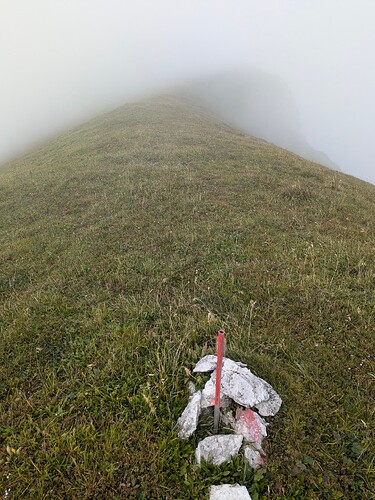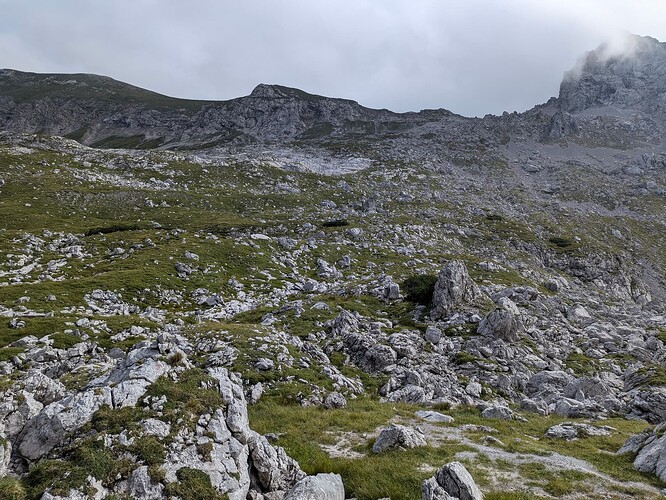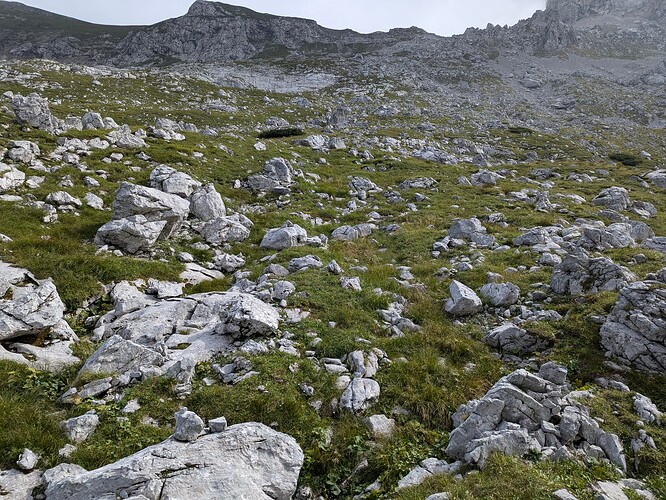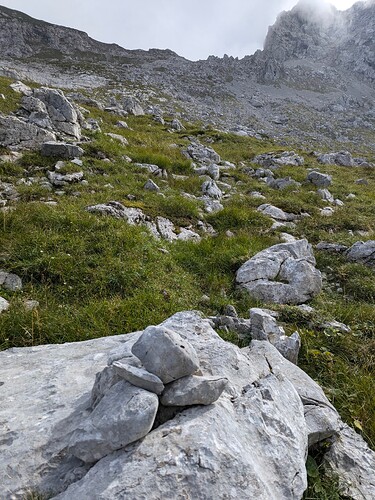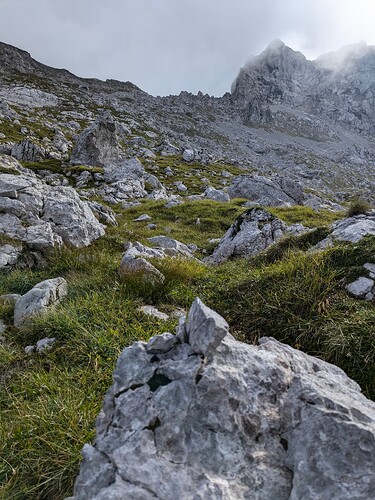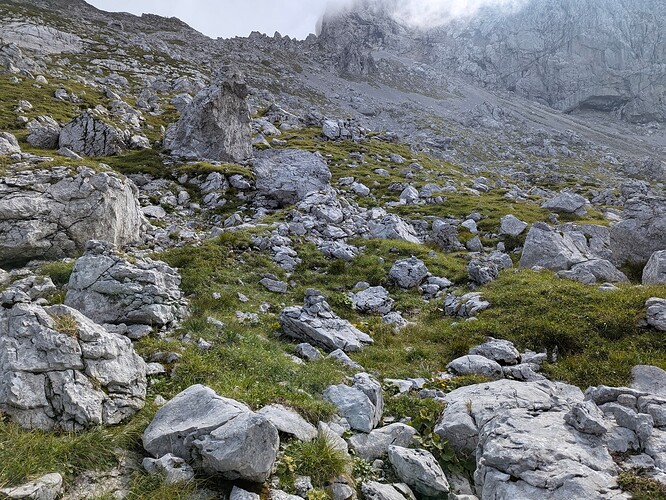In den letzten Wochen wurden von MisterY
viele highway=path + trail_visibility=no im nördlichen Hochschwab gesetzt.
Basis für diese Änderungen waren Wegbeschreibungen und die dazugehörigen .gpx-Files auf alpenvereinaktiv.com und bergfex.at
Beispiele:
Griesstein und Ebenstein (Überschreitung, SG I+) • Bergtour » alpenvereinaktiv.com
Weg: 1305940733 | OpenStreetMap
Hochschwabgruppe - Feistringstein 1.836m - Überschreitung - BERGFEX - Wanderung - Tour Steiermark
Der Hochschwab ist ein nicht ganz jäger-unproblematisches Gebiet und ich musste schon ein Paar Diskussionen über das Eintragen diverser Wege führen. Ich hatte immer den Standpunkt vertreten, dass nichts erfunden wird, sondern nur vor Ort vorhandene und nachverfolgbare Wege als highway=path eingetragen werden. D.h. es muss ein Minimum an Steinmännern, Steigspuren, Schnittspuren, Farbmarken geben und der Weg müsste zu mindestens theoretisch auch ohne Karte verfolgbar sein.
Bei den beanstandeten Wegen (Beispiel Feistringstein) sieht man vor Ort nichts oder nur extrem wenig. Beim Beispiel handelt es sich um aufgearbeiteten Windbruch bzw. felsdurchsetzten Hochwald. Wegfindung ist beliebig und erst oben am Kamm, wo das Gelände felsiger und latschiger wird und sich alle potentiellen Zustiegsmöglichkeiten vereinigen, bildet sich ein Steig heraus. Dieser Steig ist einigermaßen ausgetreten, an notwendigen Passagen auch ausgeschnitten und wurde von mir auch so in die Karte eingetragen.
Die Meinung von @-=|MisterY|=- ist, daß alles was begehbar ist, auch als Pfad getaggt werden kann.
@baumgrenze und ich haben einige von diesen Wegen wieder gelöscht, bevor jetzt ein Edit-War beginnt würde ich das hier gern zur Diskussion stellen.
